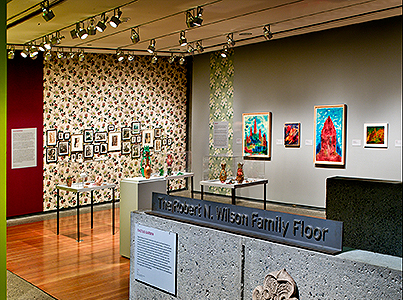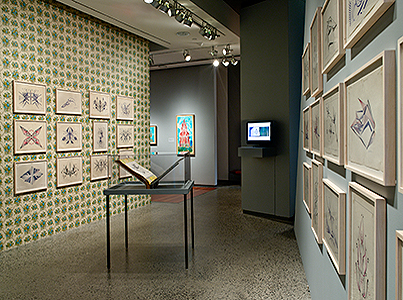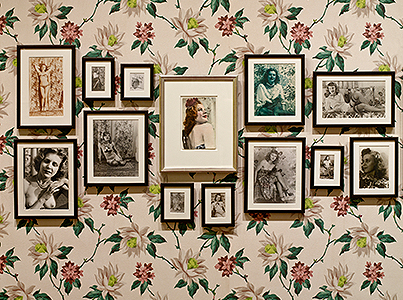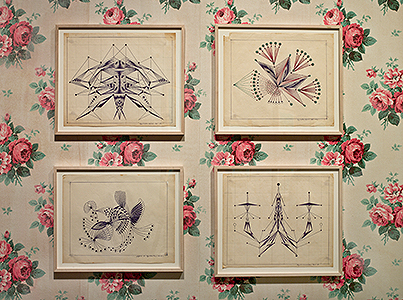UNTITLED
Eugene Von Bruenchenhein (1910–1983)
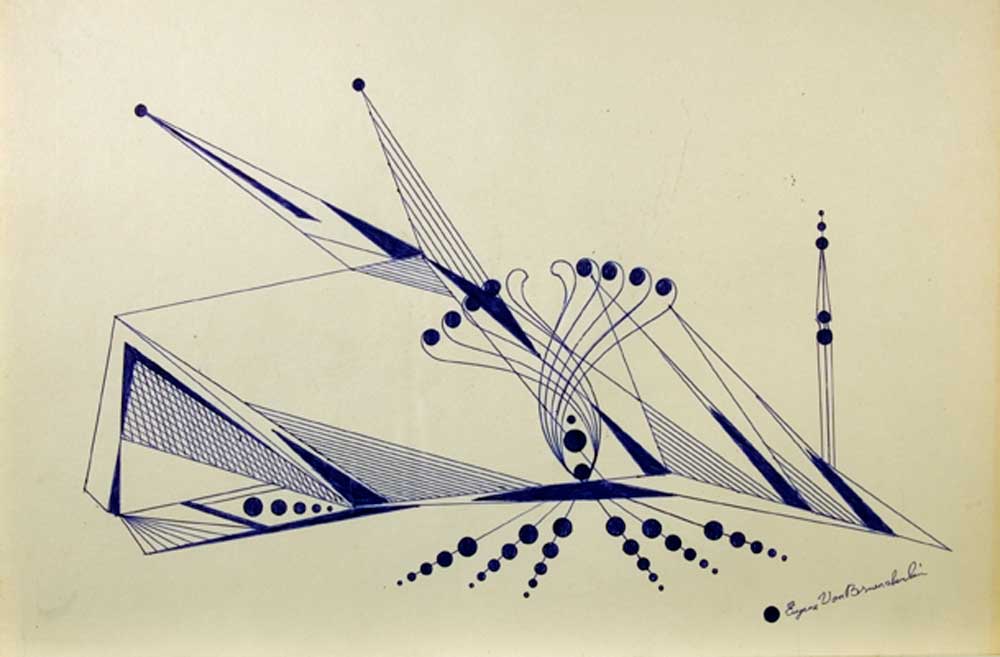
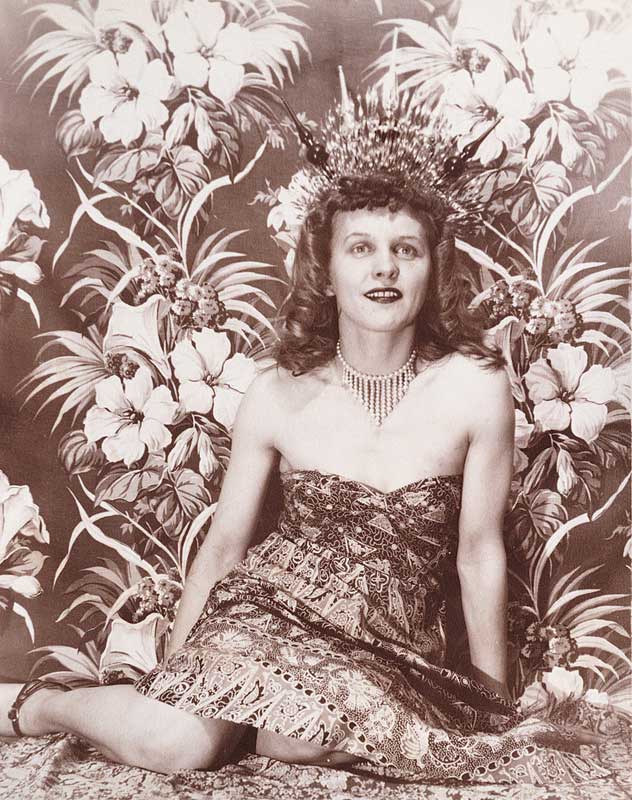
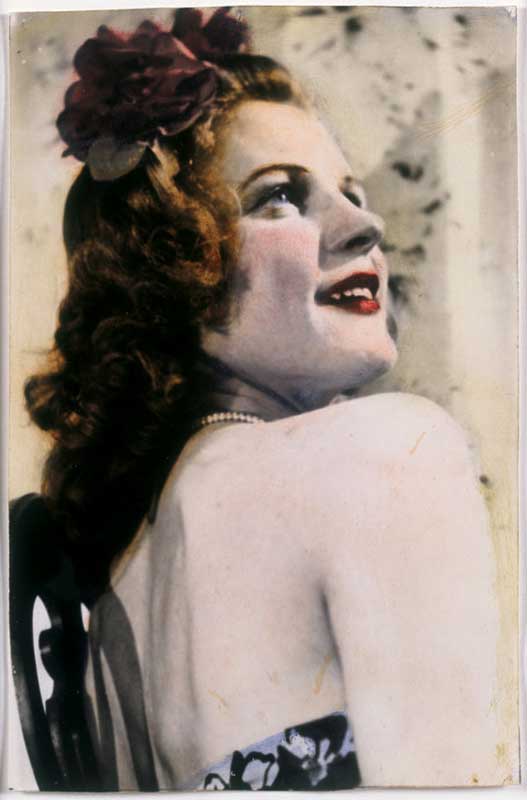
“Eugene Von Bruenchenhein: ‘Freelance Artist—Poet and Sculptor—Inovator—Arrow maker and Plant man—Bone artifacts constructor—Photographer and Architect—Philosopher’” focuses on the formal leitmotifs of leaves and floral patterns as organizing principles in Von Bruenchenhein’s multidisciplinary oeuvre. The exhibition highlights the evolution of these forms from the fabric and wallpaper featured in the early “pinup” photographs of the artist’s wife, Marie, to hand-built ceramic flowers, vessels, and crowns. These ideas are further abstracted in vertical chicken- and turkey-bone towers and thrones and in paintings of spires, castles, and visionary buildings. The installation culminates with a book of drawings housed in a wallpaper-sample book and 34 rarely displayed ballpoint-pen drawings, unifying the two structural strands. Made in the early- to mid-1960s, those works range from studies of arabesque curves to architectural designs.
Eugene Von Bruenchenhein (1910–1983) was one of the most complex and multifaceted American self-taught artists. Born in Marinette, Wisconsin, he was from an early age self-identified as an artist. Over a 50-year period, between the late 1930s until his death in 1983, Von Bruenchenhein produced expansive bodies of work in poetry, photography, ceramics, sculpture, painting, and drawing. This exhibition marks the first New York museum presentation of his work across all disciplines. Organized by guest curator Brett Littman, executive director of the Drawing Center, New York, it comprises approximately 100 objects culled primarily from the American Folk Art Museum’s extensive holdings, as well as loans from several private collections.
“Eugene Von Bruenchenhein” is sponsored by The Magazine Antiques. The exhibition is also made possible by support from Jacqueline Fowler. Additional support is provided in part by the Leir Charitable Foundations in memory of Henry J. & Erna D. Leir; the Gerard C. Wertkin Exhibition Fund; the New York City Department of Cultural Affairs; and with public funds from the New York State Council on the Arts, celebrating 50 years of building strong, creative communities in New York State’s 62 counties.
- Roberta Smith

Untitled
Eugene Von Bruenchenhein (1910–1983)
Milwaukee
c. 1940s–mid-1950s
Gelatin silver print
10 x 8 in.
American Folk Art Museum, gift of Lewis and Jean Greenblatt, 2000.1.4
Photo by Gavin Ashworth

Untitled
Eugene Von Bruenchenhein (1910–1983)
Milwaukee
c. 1940s–mid-1950s
Hand-tinted gelatin silver print
7 x 5 in.
American Folk Art Museum, gift of Lewis and Jean Greenblatt, 2001.23.5
Photo by Gavin Ashworth
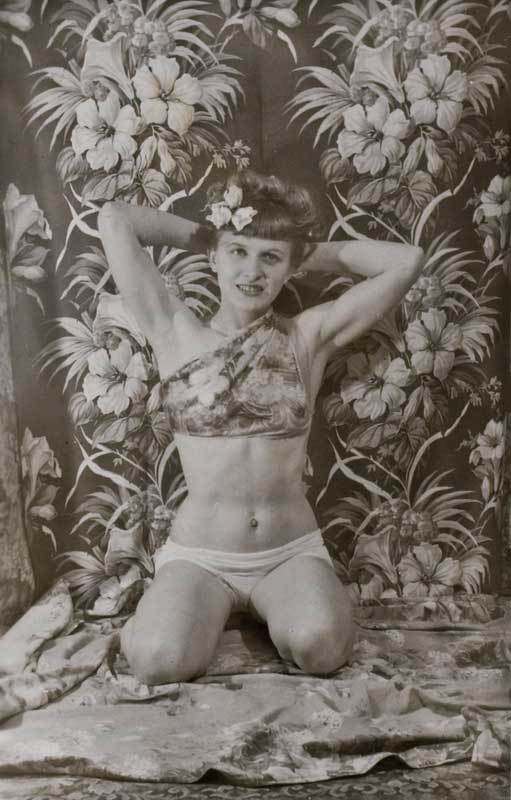
Untitled
Eugene Von Bruenchenhein (1910–1983)
Milwaukee
c. 1940s–mid-1950s
Gelatin silver print
4 1/2 x 2 3/4 in.
American Folk Art Museum, gift of Lewis and Jean Greenblatt, 2006.22.37
Photo by Gavin Ashworth
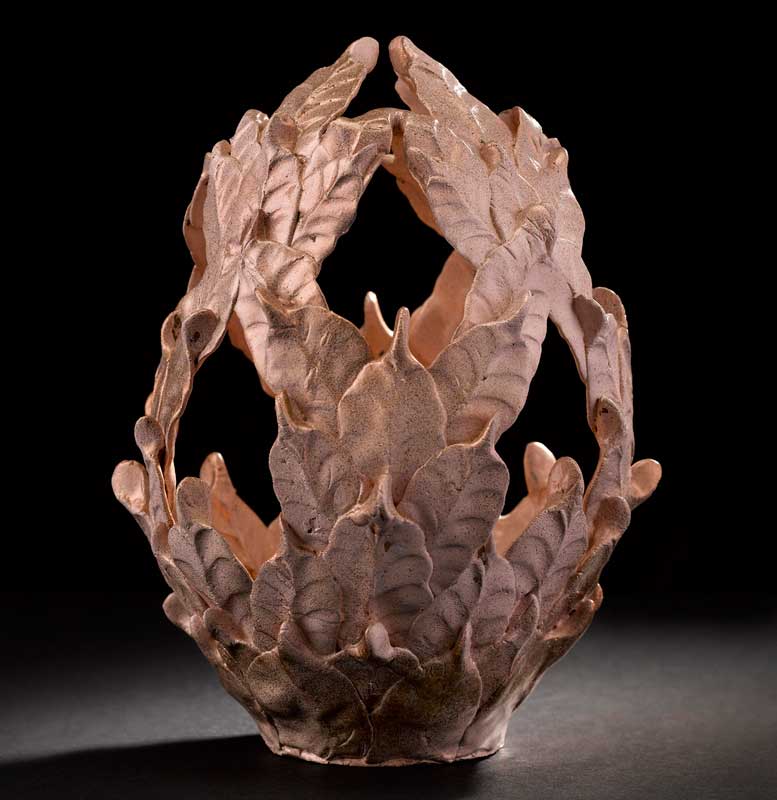
Vessel
Eugene Von Bruenchenhein (1910–1983)
Milwaukee
1960s–1980s
Paint on clay
8 x 5 in.
American Folk Art Museum, gift of Jill and Sheldon Bonovitz, 1999.19.3
Photo by Gavin Ashworth
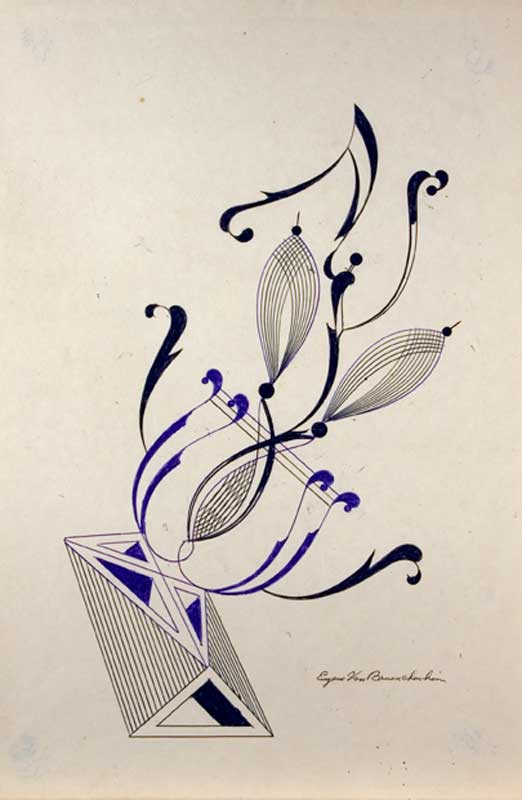
Untitled
Eugene Von Bruenchenhein (1910–1983)
Milwaukee
c. 1964–1966
Ballpoint pen on paper
17 3/4 x 11 3/4 in.
Collection of Selig and Angela Sacks
Photo by Emily Poole
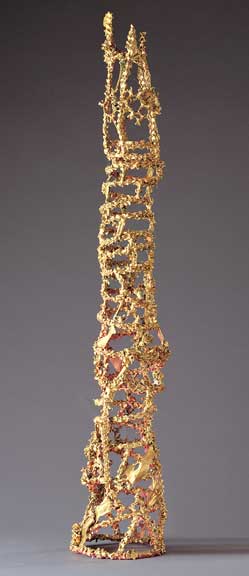
Gold Tower
Eugene Von Bruenchenhein (1910–1983)
Milwaukee
c. 1970s
Paint on chicken bones and turkey bones
37 x 6 x 7 in.
American Folk Art Museum, gift of Lewis and Jean Greenblatt, 1999.22.1
Photo by John Parnell
“Eugene Von Bruenchenhein” is sponsored by The Magazine Antiques. The exhibition is also made possible by support from Jacqueline Fowler. Additional support is provided in part by the Leir Charitable Foundations in memory of Henry J. & Erna D. Leir; the Gerard C. Wertkin Exhibition Fund; the New York City Department of Cultural Affairs; and with public funds from the New York State Council on the Arts, celebrating 50 years of building strong, creative communities in New York State’s 62 counties.

